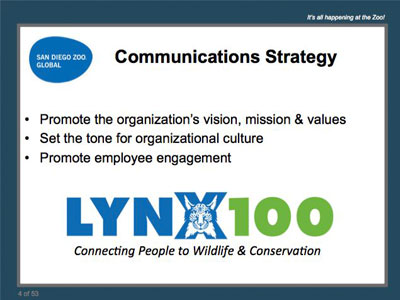 |
Guiding School-Age Children in Groups: Supervision and Boundaries |
1.00 |
When large numbers of children are involved in the program, it is challenging to create and deliver school-age program activities that can meet the needs of all children. The key to success is taking a systematic approach to program planning. It is important for staff to understand how to select appropriate activity options and use effective management strategies that make it possible to offer a balanced variety of simultaneous activity options. This understanding will help staff plan and implement a program that effectively supports, nurtures, and guides individual differences and fosters positive interaction among children in groups. |
 |
Project Management - Advanced: Project Integration and Plan Development |
0.50 |
This course will cover how to measure data during project integration and differentiate between project and product life cycles. You will also learn how to identify the importance of developing a project plan, the elements of a project plan, the key input required for project plan development, and methods used in project plan development. |
 |
Creating a World Famous Employee Communications Strategy |
1.00 |
In recent years, San Diego Zoo Global's Internal Communications programs have been nationally recognized for excellence in outstanding employee communications. During this webinar, you will hear best practices from a seasoned pro at employee communications - covering latest trends, social media, employee forums, electronic newsletters, and creation of a cutting edge intranet for your organization. You will not want to miss this one...
|
 |
Understanding the Behavior of Children and Youth |
2.00 |
The development of children and youth can cause them to behave in ways that can be trying for even the most knowledgeable and experienced staff. When staff understands what is driving the behavior, they can help to guide and encourage acceptable behaviors. This course will provide participants with the knowledge and skills necessary to prevent unwanted behavior by meeting the needs of children and youth before they act out. |
 |
Zoom Meeting Basics |
0.50 |
Zoom is a web-based video conferencing tool with a local, desktop client and a mobile app that allows users to meet online, with or without video. Zoom users can choose to record sessions, collaborate on projects, and share or annotate on one another’s screens, all with one easy-to-use platform. In this course we will go through the major features of Zoom Meetings. |
 |
Hazard Communication Basic |
1.00 |
This course covers the basics when it comes to hazard communication. The topics will range from the Hazard Communication Standard to the labeling of hazardous materials. |
 |
Quality Management: The Costs Of Quality |
0.50 |
Before the quality revolution that began in the United States in the 1980s, quality was frequently viewed as a goal that came at a higher price for production. However, the reality is that poor quality is a result of the ineffective use of resources, including wasted material and labor. Therefore, improved quality means better use of resources and lower costs.
In this course you will learn to: identify the relationship between quality and cost, the benefits of establishing quality requirements, management’s responsibilities for achieving conformance, and the costs of customer dissatisfaction. |
 |
Reducing Foodborne Illness Risk Factors in Food Service and Retail Establishments |
0.50 |
This course covers different risk factors that are insufficiently controlled in institutions, retail food, and restaurants. Recommendations to help these places control these risk factors are also given. |
 |
GED: Social Studies - Unit 5: Post-Test |
0.25 |
Welcome to Unit 5: Post-Test. This post-test covers civics and government, US history, economics, and world geography. At the end of this post-test is a table that matches each test question to the content it covers. Use it to review and content you haven't mastered. |
 |
Business Accounting: Stockholders' Equity |
1.50 |
This course will cover how to identify various types of stocks and calculate the value of a corporation’s stock as well as how to use financial ratios to calculate book value and market value per share. You will also learn how to identify the components of stockholders’ equity and report stockholders’ equity on financial statements. |











